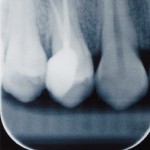
Pain following root canal treatment is reported in 3-58% of cases and is an important concern to both patients and clinicians. Pre and post-operative medication, occlusal reduction and a range of operative techniques including irrigant solutions, intra-canal medication, rotary instrument use etc have been suggested as methods of mitigating post endodontic pain.
The aim of this review was to assess the effect of occlusal reduction on post-operative pain following root canal treatment.
Methods
Searches were conducted in the Medline/PubMed, Dentistry & Oral Sciences Source (DOSS) and the Cochrane Library databases. Randomised clinical trials (RCTs) assessing the effect of occlusal reduction (OR) on post-operative pain in adult patients whilst performing root canal treatment in teeth diagnosed with irreversible pulpitis or apical periodontitis were considered.Only studies measuring pain after at least 6 hours using a visual analogue scale (VAS) and published in an English or Latin alphabet languages were included.
Two reviewers screened the studies with data being extracted independently. Risk of bias was also assessed independently by two reviewers using the Cochrane risk of bias tool (RoB2). The standardised mean difference (SMD) between the groups (with or without occlusal reduction) was estimated using a random effects meta-analysis. The certainty of the evidence was assessed using the GRADE approach.
Results
- 7 studies were included with 3 contributing to the meta-analysis.
- 3 studies were considered to be at low risk of bias, 1 at high risk and 3 at unclear risk.
- Narrative summary of the included studies suggests a reduction in pain with OR; 4 studies reported that OR did not significantly reduce post-operative pain with 3 studies reporting a beneficial effect.
- Meta-analysis (3 studies 762 patients) showed that OR reduced post-operative pain at 6 days; SMD= 1.10 (95%CI; 2.06, 0.15).
- Using the GRADE approach, the certainty of the evidence was assessed as ‘very low’.
Conclusions
The authors concluded: –
Occlusal reduction (OR) after root canal treatment likely reduces post-operative pain associated with teeth diagnosed with irreversible pulpitis and symptomatic apical periodontitis, in particular at 6- day follow-up in cases of irreversible pulpitis. However, OR has limited effect on pain reduction within the first 24 h after treatment. This review highlights the need for further high-quality studies in order to better understand the role of OR after root canal instrumentation for the different pulpal and periapical diagnoses and subsequently provide more robust recommendations for clinical practice.
Comments
We covered this topic earlier in the year in a review by Shamszadeh et al (Dental Elf – 31st Jan 2020). That review included 6 RCTs and reported on the difference in pain from 12-72 hrs post operatively. The current review focuses on pain after 6 days including only studies that used a VAS to assess pain. Only 2 studies are common to both reviews with a third study included in the Shamszadeh review being excluded from this new review as a VAS was not used. The Shamszadeh review reported on pain at 12, 24, 48 and 72 hours suggesting no benefit from OR until 72 hours post-operatively.
The quality of the included studies in both reviews is limited so the findings should be interpreted with caution. The authors highlight potential variation in selection criteria and a range of potential confounders that may influence the outcomes including use of pre-operative analgesia or cortico-steroids, level of pre-operative pain, accuracy of diagnosis, differences in root canal protocols and tooth preparation etc. High quality well reported studies of appropriate size and following recognised international standards and using common outcome standards to assist future comparative studies would help provide better evidence.
Links
Primary Paper
Nguyen D, Nagendrababu V, Pulikkotil SJ, Rossi-Fedele G. Effect of occlusal reduction on postendodontic pain: A systematic review and meta-analysis of randomised clinical trials. Aust Endod J. 2020;46(2):282-294. doi:10.1111/aej.12380
Other references
Dental Elf – 31st Jan 2020
